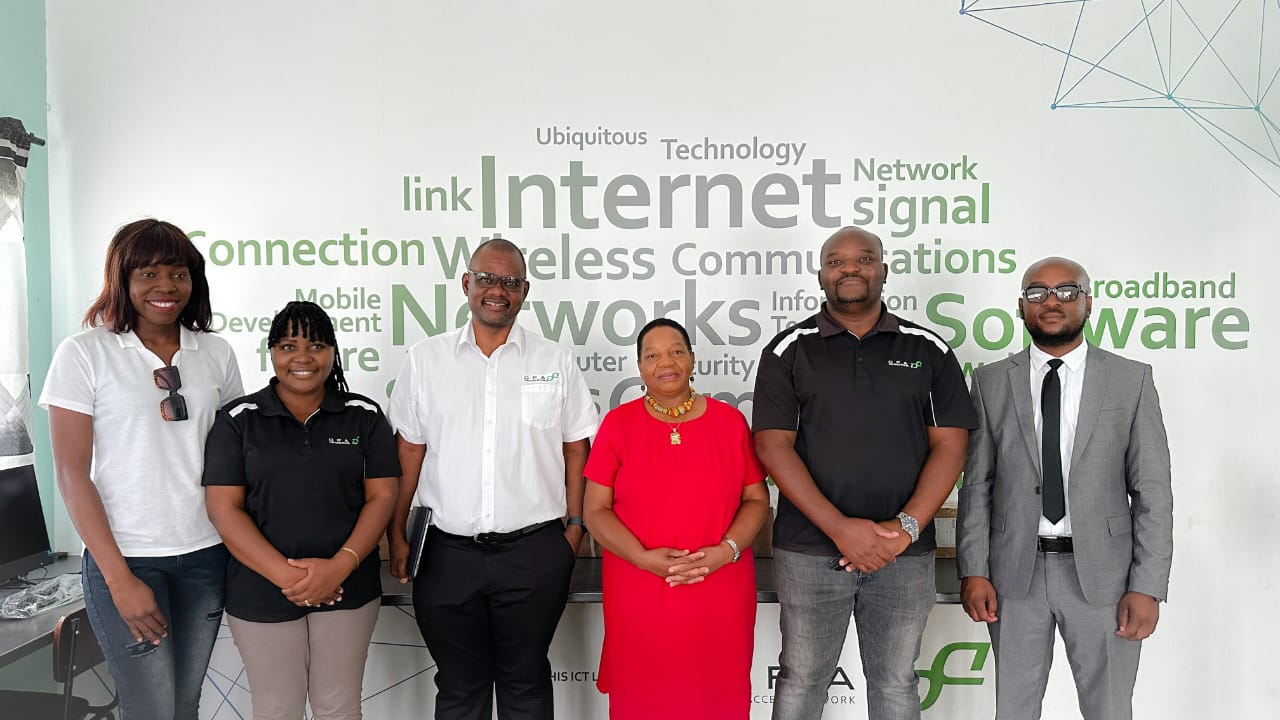In my opinion, there is no deed too small in our digital literacy and inclusion fight. So, when we heard that Dark Fibre Africa (Zimbabwe) had sponsored the transformation of a library into an ICT lab at a children’s home, we had to see what was what.
The children’s home in question is the Village of Hope Children’s Home in Good Hope, Harare. I counted 10 computers and a projector and the furniture to use with that digital equipment. In addition, Dark Fibre Africa (DFA) Zimbabwe will provide internet access in perpetuity. Great stuff.
47 children housed at the Home will benefit from the lab.
This is not what DFA Zimbabwe is normally up to, as you may know. As the CEO, Simon Chimutsotso put it,
This is a unique presence [at the Home], our business is to connect ICT companies but as adding to the corporate social responsibility, we literally came here because of the orphanage. We now have presence in this place but our first point of presence is to give to the disdvantaged.
That’s him saying the main motivation for them was to give to the disadvantaged but now they do have a presence there.
What is DFA usually up to and how are they doing? – you ask.
While we had DFA Zimbabwe there, we managed to get some updates on what 2023 was like for them and what 2024 has in store.
As the CEO said above, DFA is all about connecting ICT companies. They provide open-access fibre infrastructure and connectivity. In simpler English, they finance, build, install, manage, and maintain a fibre network to transmit metro and long-haul telecommunications traffic.
Is this a Harare thing? Says the CEO,
I am happy to report that in our three years of operation we’re pretty much in every town of Zimbabwe. We have connected over 1200 schools and clinics and the underserved areas through VSAT technologies. We are in Harare, we are in Bulawayo, we are in Mutare and we are finishing a project that will connect South Africa to Zambia via Zimbabwe. So, it’s a link that connects Beitbridge to Vic Falls, Harare to Bulawayo and therefore we are passing through all those countries [places] using fibre.
So, how much fibre has DFA laid? Earlier this year we talked about DFA’s fibre-by-rail project that sought to lay 2000km of fibre. The project was completed and is now in the commercialisation stage according to the CEO. “So far we have done over 1400km of fibre on the ground,” he said.
However, that’s just the fibre being laid from Beitbridge up adjacent to the railway tracks. In total, DFA has laid close to 2000km of fibre and is growing.
Open access
DFA’s major differentiator from the other major players in the fibre laying game – Liquid and Telone – is that they have an open-access model. This open-access model has come with its own benefits. There is infrastructure sharing in this industry, evidently. Says the CEO,
We are very privileged our business model is open access network. Basically, what it means is we build fibre for use by other players in the industry. We have had the leverage of utilising existing fibre infrastructure on the ground. Open access does not mean we have to dig. Open access means we utilise what is available, if it can be shared and if it can be incapacitated to meet clients’ needs.
So, I am very happy to say we have collaborated very well with current industry players. We are utilising other people’s infrastructure to enhance that open-access model.
We have not had any challenges in terms of limitations [in infrastructure sharing] but I must say we are happy to be capacitating the country through our own fibre and through the use of existing fibre infrastructure in Zimbabwe.
This means DFA has laid close to 2000km of their own fibre but are supplementing that with the use of fibre laid by other players. “If you look at what we are currently utilising, it’s way more than the 2000km because of collaborations in the industry,” the CEO added.
All things being equal, all this should lead to lower costs in the future and therefore lower data prices in the country.
On the topic of lower prices, the CEO also commented on Starlink potentially coming to Zimbabwe. As you know that would be competition for their fibre network and VSAT offering. He said,
I believe heroes are born out of war. We welcome new players in the industry. Ultimately, it’s all about the end consumer. So, coming in of new players makes the environment more competitive. It means that the pricing that will arise from the market is that which will benefit the end consumer. So, we see the entrance of new players as an opportunity for collaboration.
I got the sense that he meant that but even if he didn’t, that was a good response to the potential entrance of Starlink into the market. The end consumer (you and I) stand to benefit and if players like DFA seek partnerships instead of lobbying to block it, they too stand to win.

6 comments
Great initiative towards the digital future🤝🏾
Great initiative 👏👏👏
Well done, I can feel the kids’ excitement!
Great initiative.i hope it has reached Glendale /Concession area as well.
That’s great for the orphanage and the kids. Of course service providers are not worried much about StarLink because of the initial cost of acquiring StarLink. If only one financial institution would provide funding or rather loans for acquiring the satellite kits then it’s game over for our incompetent, uncaring and poor service providers. Unfortunately we will not live to see that day.
😭😭😭😭
DFA, do you have a POP in Chitungwiza?